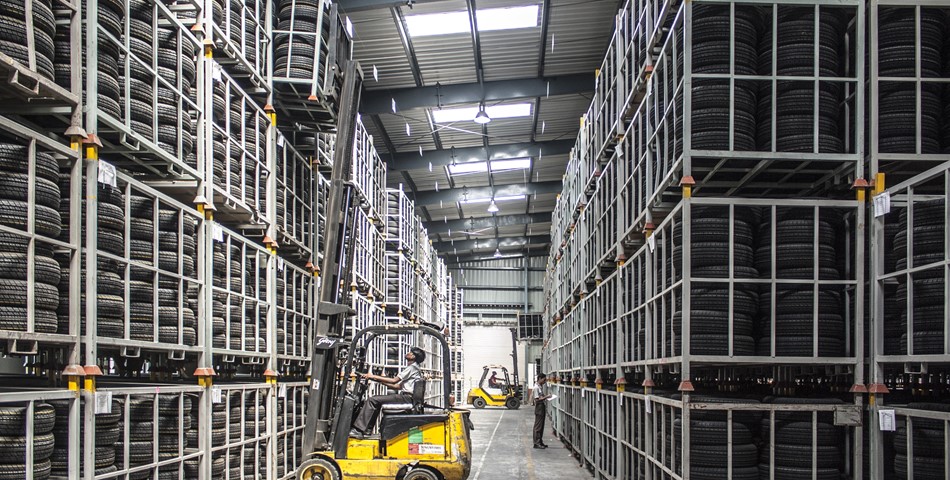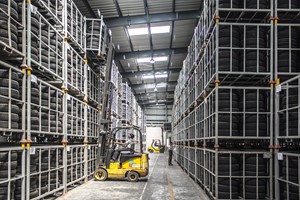The global forklift market consists of various major manufacturers such as Toyota Industries Corporation (Japan), KION Group AG (Germany), Hyster-Yale Material handling Inc. (U.S.), Jungheinrich group (Germany), Mitsubishi Nichiyu Forklift Corporation (Japan), Crown Equipment Corporation (U.S), Hyundai Heavy Industries (South Korea) and Komatsu Limited (Japan). According to Ken Research, Forklifts take part in many of the region's warehousing activities. Saudi Arabia has established itself as a leading country in logistics & Warehousing Industry in GCC region. The kingdom is one of the fastest growing countries in the logistics and warehousing industry globally. Additionally, it is the primary entry point for goods in the GCC market. It borders Oman to the East and UAE to the North. Saudi Arabia also shares sea borders with Qatar and Iran. The geographic location makes the region most suitable for the logistics industry. The improving road infrastructure, rise in government support in the form of incentives and subsidies, improving corporate working environment due to large availability of expatriate workforce has driven the size of the industry. The rising demand of cold chain logistics in Saudi due to the increase in the consumption of meat & animal food has triggered the size of the industry. The warehouses and fleet required for transportation of cold chain products are costlier than the logistics requirement for other products. The robust growth in the e-commerce sector in the country has majorly influenced the growth rate of logistics and warehousing industries. Research consultancy Solidiance has published a new white paper which states that the logistics market within the six GCC counties was worth US47 billion last year, and that Saudi Arabia, with a market size of USD19bn, made up 43% of that. The Saudi market had grown by USB1bn per year over the preceding two years, and is set for much faster growth both as a result of its national transformation plan and the development of a borderless GCC customs union. According to Transparency Market Research, the growth of the global logistics market is directly related to the development of international trade flow and the current economic environment. Asia Pacific and North America appear to be the most attractive markets for logistics, particularly when it comes to contract service such as third-party logistics. Intra-regional trade in emerging markets is becoming important, especially in Asia Pacific, and this, combined with high GDP rates, is projected to continue boosting the logistics market. The usage of logistics services in different applications such as manufacturing, retail, trade and transportation, government and public utilities, healthcare, media and entertainment, telecommunication, banking and financial services, and information technology is expected to rise considerably during the forecast period, which in turn, is estimated to strengthen the growth of the logistics market globally. The global logistics market, in terms of revenue, is set to expand from USD8 trillion in 2015 to USD15.5 trillion by 2023, registering a CAGR of 7.5% from 2015 to 2024. By volume, the market is expected to clock in a 6.0% CAGR from 2016 to 2024. According to IBIS World research, the forklift manufacturing industry relies on demand from the construction, manufacturing and freight-handling industries. Consequently, as downstream industries recovered, industry revenue grew over the five years to 2016. Profit margins have also improved considerably due to growing demand, falling steel purchase costs and significant automation of production. Additionally, the international landscape has contributed to industry growth; however, imports from China, Japan and other cost-efficient manufacturers have also increased competition in the domestic market. Forklifts, which are also known as industrial trucks include truck-type and hand-type pallet movers, skid jacks and portable stackers. Forklifts can load material and transport it over short distances and are used heavily in the construction, manufacturing and freight logistics sectors. This industry's operations also include the manufacture and sale of parts and attachments for forklifts.



According to Markets&Markets, the global forklift market is projected to grow at a CAGR of 1.93%, from USD16 billion in 2016 to USD17.6 billion by 2021. The global market is driven by the less than 5 ton capacity forklifts which accounts for a major market share in terms of volume. The less than 5 ton capacity majorly includes battery-electric forklifts as well as Internal Combustion Engine (ICE) forklifts but the battery-electric forklifts penetration in this segment is highest.











